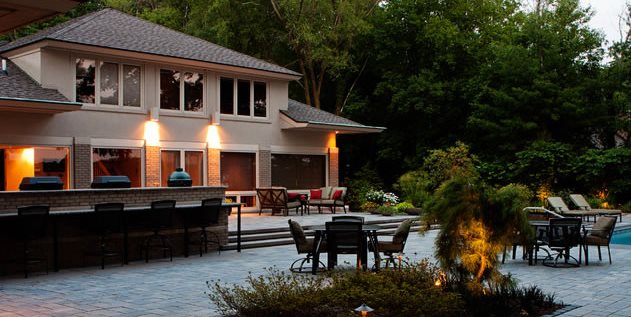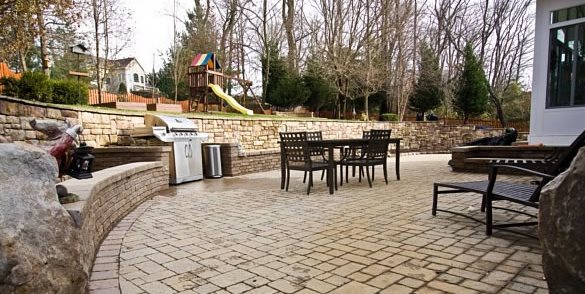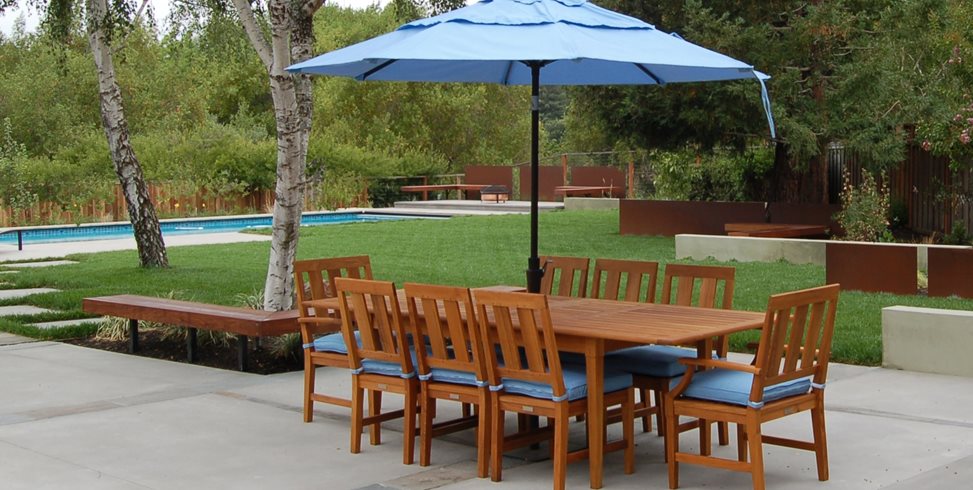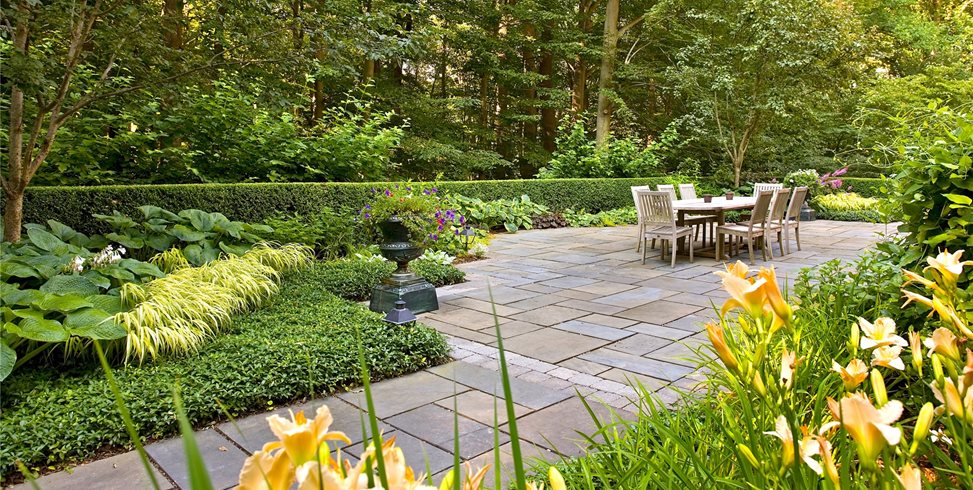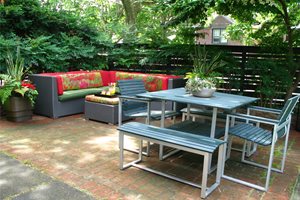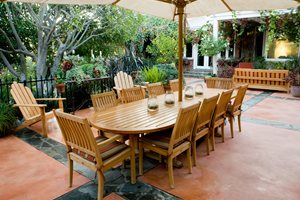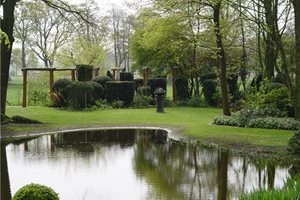Large Patios
Get insights from experts on how to design a large patioLarge homes, larger lots and a sizable budget are the criteria of a large patio. Outdoor living areas must remain in scale with the structure and the surroundings, but creating large expanses of paving is not the answer. Landscape architects focus on their design criteria linked to the client's lifestyle, then meet those needs in the most efficient, attractive way possible.
It is easy for a large landscape to be broken down into smaller use areas that may not appear separate, but they are individualized by their particular use. These are the driving force behind patio layout so that the various interests can be linked either by pedestrian access or visual experience.
Adam Heath of Mid Atlantic Enterprise, is a Virginia landscaper who knows large, expansive projects. "I can't stand a big patio for the sake of a big patio," he says. "It's just like a house. Interiors aren't open cavernous spaces because they are hard to furnish and the circulation is vague. Outdoors we use banding in the paving to visually break up a large space." Such design in the paving helps to subliminally tell users where outdoor rooms are located and it also helps to bring smaller spaces together. "Often you need a lot more green space to offset all the paving. That's why we are keen on creating planted areas within the larger paving area. We love raised planters because they also provide the opportunity for convenient seatwalls.
- Pro Tip: I don't like having my cooking and eating in the same place. You don't cook in the dining room.—Adam Health, Mid Atlantic Enterprise
Corey Bittner of New York's luxury landscapers, Neave Group Outdoor Solutions specializes in large residential projects. "Larger patios are the most popular option for our customers. We use color inlay with pavers and stone to create an outdoor rug under where the dining table is located. One of our projects featured a space so large we had no choice but to integrate raised beds to interrupt all that open space."
These landscapers all agree that planting is the most effective way to mitigate overly large paved patios. In Michigan, Chris Major of Blue Ridge Landscaping is a master planting designer. "You can have a fantastic patio, but if you're not incorporating softer tones of plants, it won't feel comfortable. Plants are very important at every level whether draping down retaining walls or popping out of flagstone cracks. The planting is such a vital element that we take a natural approach and it's the right choice as landscapes mature. Planting design makes outdoor living spaces fit better into the natural world."
Key to patio design is knowing just how much space is required for each use so that the design responds to these very concrete demands. For example, the number of sit down diners to accommodate is directly related to the amount of square footage dedicated for the dining area. Furniture must fit here too so that outdoor living spaces are designed large enough for groupings that contribute to a festive enjoyable space.
Adam Heath also believes that there are alternatives to large patios by creating a carefully designed series of smaller more human scale spaces. "In a recent project we created two circular patios with steppers linking them through a green space. We created one patio for dining and grilling with the other one functioning more like an outdoor room such as a den. The client desired to possibly expand the grilling area in the future, so we built it all sleeved out for gas, electric and water for future use."

 Backyards
Backyards
 Front Yards
Front Yards
